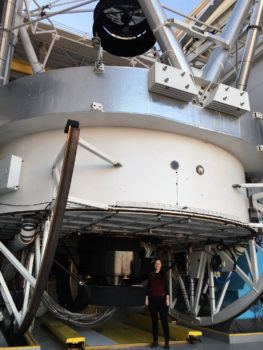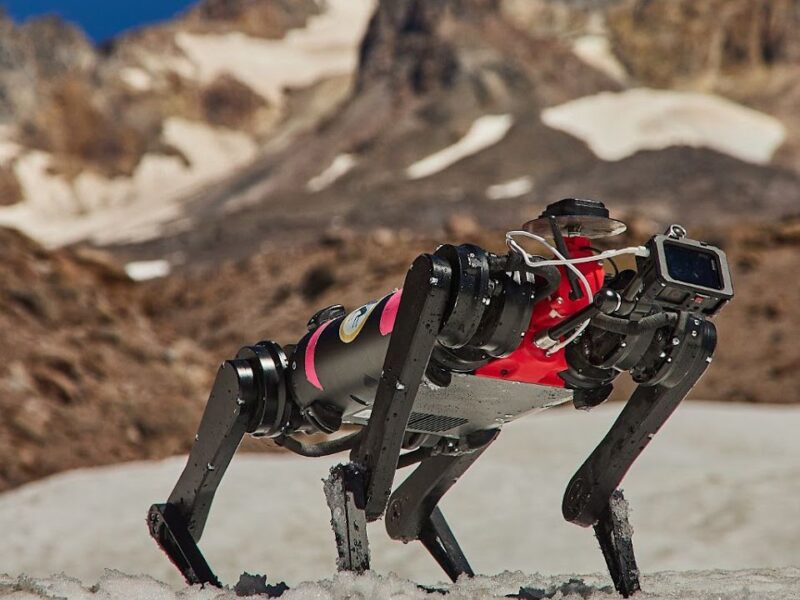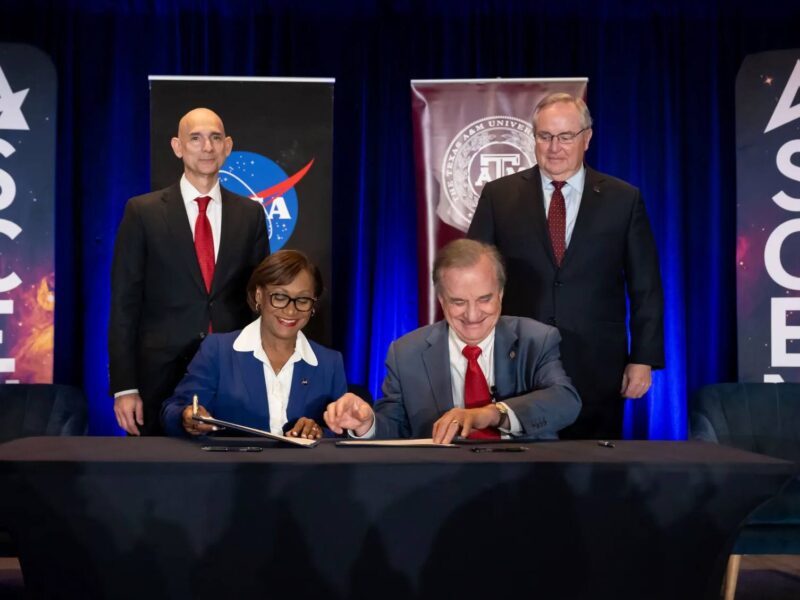Stargazing
Sometimes when she’s alone in an observatory, surrounded by computer screens and terabytes of data in some remote control room, peering deep into the mysterious black cosmos, Taylor Hutchisonlikes to take a moment to remind herself just how fortunate she is.
It’s hard to blame Hutchison*, a graduate student in the class of 2022 in the Texas A&M University Astronomy Program, for being a little sentimental about it. After all, it’s not everyone who can say they’re making a career out of probing some of the earliest known galactic formations.
“I love my job; it’s a dream come true,” Hutchison said. “I get to travel the world and go to these amazing telescopes to take data. I get to do this as a job and get paid for it. I feel like I should be paying them instead because it’s such a fantastic experience and what I’ve always dreamed of doing.”
As a member of Texas A&M astronomer Casey Papovich’s research group within the George P. and Cynthia Woods Mitchell Institute for Fundamental Physics and Astronomy focusing on areas of galaxy formation and observational cosmology, Hutchison is specifically analyzing the distinguishing features of ancient galaxies and how they developed in order to better understand how the universe appeared in its early existence. Because galaxy evolution is still such a relatively new field, Hutchison says there are still many questions to be answered.
“Anything you find out about these galaxies makes a high impact because we just know next to nothing about them,” she said. “It’s a really exciting field, and it’s difficult but rewarding work.”
To put it into perspective, the galaxies Hutchison investigates were formed only about a billion years after the Big Bang explosively expanded the universe into existence nearly 14 billion years ago and are so distant, or old, that their light travels billions of years before ever reaching Earth. This means that when Hutchison observes these galaxies, she is seeing them not as they are now, but as they were long ago.
This is accomplished using near-infrared spectroscopy, a technique in which the light emitted from a distant object is divided into a spectrum to better analyze its corresponding wavelengths. Hutchison then can determine important details about remote galaxies, such as the temperature, mass, chemical composition and distribution of its stars.
“As these galaxies move away from us and we move away from them, their light is actually being stretched,” Hutchison said. “It’s ultraviolet light that’s been stretched so much that it’s only visible in the near-infrared. Spectroscopy is a way to characterize that.”
Hutchison originally came to Texas A&M in 2016 as the recipient of a four-year Texas A&M Graduate Diversity Fellowship, and her work since has earned her a 2018 National Science Foundation Graduate Research Fellowship, the first awarded to a Texas A&M astronomy student in program history.
During the past two years, she has been making regular visits to the W.M. Keck Observatory in Hawaii to acquire data for one of her current projects to learn about the physical conditions of stars in early galaxies. Unlike newer stars that contain many heavy elements, stars formed soon after the Big Bang were made up of only hydrogen and helium. Understanding the nature of these pristine stars could lead to important clues about the formation of subsequent generations of stars.
“What Taylor has been doing is fantastic,” Papovich said. “She’s looking at these galaxies with one of the largest telescopes, but they’re still very faint. It’s hard to imagine, but the things Taylor is looking at are fainter than the night sky. It’s extremely hard to do what she does.”
Despite the long hours consumed by her research, Hutchison still manages to find time for another passion that she considers equally important – outreach. She is a co-founder of the Society for the Underrepresented in Physics and Astronomy (SUPA) at Texas A&M.
Established in 2016, SUPA invites all students, faculty and staff in the Department of Physics and Astronomy to participate in regular discussions aimed at addressing unique challenges faced by women and underrepresented groups in general. Hutchison was honored for her efforts to conceptualize and bring the group to fruition with a 2018 College of Science Leadership in Equity and Diversity (LEAD) Award, which recognizes faculty, staff and postdoctoral research associates who have displayed commitment to enhancing the college’s environment of mutual respect and diversity.
“The main goal of SUPA is to provide a place of community for everyone in the physics and astronomy department who is underrepresented, and also allies, to be able to come together and talk about the issues that they face and any kind of strategies that we can use to combat these problems,” Hutchison said. “Not only are we succeeding in our research, we’re also succeeding as healthy individuals in promoting each other. Texas A&M is fantastic for that.”
Earlier this month, Hutchison and a handful of colleagues across the globe debuted a new project, #UniqueScientists, that seeks to share and celebrate diversity in science while also encouraging and inspiring the next generation of scientists. The group amassed more than 4,000 followers on Twitter in less than two weeks and is partnering with Genius Lab Gear to offer stickers, t-shirts and tank tops as a fundraiser to support its not-for-profit, scientific diversity inspired cause.
For Hutchison, passion and science simply go hand in hand and have ever since her childhood. She originally had aspirations of becoming a marine biologist but turned her focus to the stars as an undergraduate student at Southwestern University, where she discovered her calling as an astronomer by befriending the school’s only astrophysicist and accepting an invitation to assist him with research on supermassive black holes.
“I got to use a telescope at that campus and for four years, I got to do exactly what you always hear astronomers do,” she said. “I think that’s when I figured out what I wanted to do – when I was able to be at a telescope taking data.”
Even now as a third-year graduate student with her master’s of science in astronomy under her belt as of this May, Hutchison has never lost that itch to explore the sky through the lens of a telescope.
“Whenever I go observing is when I feel most like an astronomer,” she said.
* This link is no longer active and has been removed.
This article originally appeared on the College of Science website.








